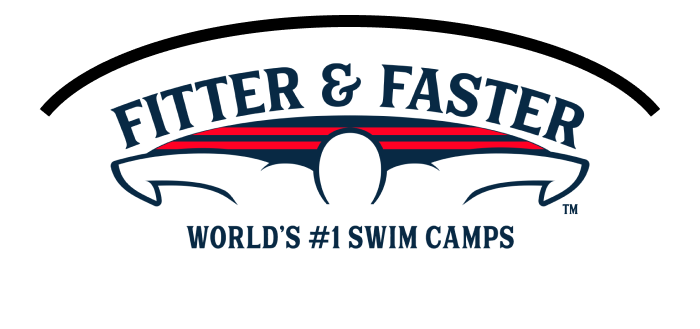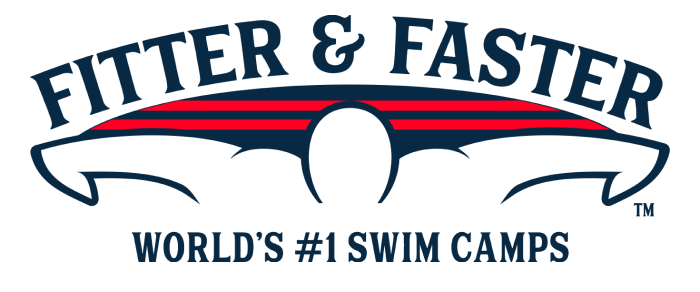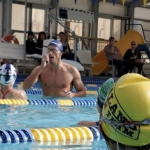Past Clinic: Comprehensive Butterfly & Turns Swim Camp
The St. James
6805 Industrial Rd,
Springfield,
VA 22151
A description of what was covered at this past clinic is below the upcoming clinics.
Upcoming Swim Clinics and Camps
Within 250 miles of Springfield, VA.
Past Clinic
Introduction
Fitter & Faster is returning to the world-class aquatics center at the St. James in Springfield, Virginia to produce a 3-day swim camp on May 27-29!
COMPREHENSIVE BUTTERFLY RACING & TURNS CAMP
DAY 1: Butterfly Technique
DAY 2: Butterfly Racing & Training Skills
DAY 3: Fast Open Turns and Underwaters
Scroll down for details on the curriculum!
-> Availability in each session is limited to 24 participants to ensure the best learning experience!
-> SAVE when you purchase the “Full Camp Bundle” for your swimmer's age group!
START TIMES FOR ALL 3 DAYS:
- Ages 10 to 12: Check in 9 AM. Camp: 9:15-11:45 AM
- Ages 12 & over: Check in 12:30 PM. Camp: 12:45-3:45 PM
Suggested Participants
Our top priority is to provide a world-class learning experience for all participants at all of our camps. This camp has sessions for swimmers ages 10 to 12 and 13 & older. Participants will range from one-year of competitive swimming experience to AAAA times and faster. If you are the parent of a child under the age of 10 and would like for your child to be considered for the younger sessions of this camp, please complete this questionnaire.
Curriculum
At the highest level of swimming, butterfly is the second fastest stroke and beautiful to watch because of its rhythmic and powerful strokes. There are some complexities to establishing a smooth, rhythmic fly, but with practice and attention to detail your swimmer can master the stroke and begin swimming it for longer distances and at very fast speeds! No matter your swimmer’s level, this 2-day camp will strengthen their butterfly technique, racing and training skills that will lead to faster and more efficient butterfly races! This swim camp will be led by Elite Clinician: Giles Smith!
DAY 1: BUTTERFLY TECHNIQUE (May 27)
We want your swimmer to establish a rhythmic butterfly. Today we will practice various drills and skills that will enable your swimmer to have flowing hips and a long, more powerful butterfly stroke.
- BODYLINE: A butterfly race is going to be fastest with a proper bodyline. Even the slightest adjustment of the chin, neck, and/or back can make a huge difference. As swimmers mature in the sport and grow physically, their body position shifts and bad habits can emerge. Participants will learn and practice proper posture and engagement of their core to have a strong foundation for better technique - creating a full-body connection for more hydrodynamic and efficient butterfly strokes.
- KICK: Each butterfly stroke has two kicks to propel the swimmer towards the other end of the pool! If the kicks are properly timed and equally strong, they can positively impact your swimmer’s efficiency and stroke timing! Your swimmer will work on how and when to kick in butterfly for maximum speed.
- PULL: Long and smooth strokes allow swimmers to have a more efficient and fluid butterfly. The pull in butterfly keeps a swimmer accelerating forward. Your clinicians will work with participants to establish an early vertical forearm, “the catch”, enabling the swimmers to put immediate pressure back on the water. Properly completing the stroke keeps the swimmer moving forward efficiently and fast.
- BREATH: The timing of the breath in butterfly has a direct relationship on a swimmer’s body position, pull, kick and TIMES! At this camp, we will work with participants on breathing with their chin low to the water... and WHEN to breathe in their stroke cycle so that they develop the most efficient stroke possible!
Day 2: BUTTERFLY RACING AND TRAINING SKILLS (May 28)
On the first day of this camp swimmers worked on techniques to implement an efficient butterfly stroke. On Day 2 we will work on applying speed to their butterfly! Our objective is to get your swimmer to maintain their technique with distance per stroke, tempo, and flowing speed.
- LENGTH OF STROKE: Lengthening your swimmer’s butterfly stroke will enable them to “catch” and hold onto more water to propel them as they swim. In butterfly, it is particularly important to establish a “rhythmic flow”. We will teach participants how to stay long and avoid a short butterfly stroke that is inefficient and not sustainable for very long. The clinicians will work with participants on this important skill for swimming fast butterfly.
- TEMPO: Tempo in butterfly is the rate at which a swimmer is moving their arms and hips. When swimming butterfly races many athletes tend to take too many short strokes (“spin their wheels”) and not “hold onto the water”. At this camp we will explore different tempos that are sustainable for any distance your swimmer is racing.
- POWERFUL UNDERWATER DOLPHIN KICKING: There are a few different techniques that swimmers use when underwater dolphin kicking. The common theme of these techniques is that the best swimmers kick up and down with equal power. We will show your swimmer the different techniques that elite swimmers use and teach them how to implement.
- SPEED SET: At the end of this session your swimmer will do a short and fast swim set to practice everything they have learned over the past two days.
DAY 3: FAST TURNS & UNDERWATERS (May 29)
Quick, powerful turns and underwaters are crucial to fast times and winning close races. The top age group and elite swimmers aren't using walls just for turning around - they are used to generate speed and momentum going into the next lap. Elite swimmers are constantly working their turns and looking for areas to improve them. Today, we're going to work with your swimmer on taking this crucial part of every race (and practice) to the next level!
- OPEN TURNS: Elite butterflyers and breaststrokers utilize speed from their last lap to create momentum and even more speed at the beginning of the next lap. Their open turns are actually not “turns”, but more like high-speed pivots. Participants in this session will work on these techniques to have much faster open turns!
- STREAMLINE: The streamline - if done properly - will be the fastest a swimmer travels while in the water. Proper streamlines are even faster than underwater dolphin kicking. Even the most elite swimmers in the world are constantly working on improving their streamline. Your swimmer will get tips to improve their streamline and a better appreciation of what they need to do on every single wall in practice and in races.
- INITIATING UNDERWATER DOLPHIN KICKING: Elite swimmers want to maximize their streamline on every single lap. So, they don’t want to start their underwater dolphin kicking while they’re still achieving maximum speed in their streamline. They also don’t want to start the underwater dolphin kicking after their streamline has begun to slow. Your swimmer is going to learn how to time when to begin their underwater dolphin kicking.
- POWERFUL UNDERWATER DOLPHIN KICKING: There are a few different techniques that swimmers use when underwater dolphin kicking. The common theme of these techniques is that the best swimmers kick up and down with equal power. We will show your swimmer the different techniques that elite swimmers use and teach them how to implement.
- NUMBER OF UNDERWATER DOLPHIN KICKS: Figuring out the optimal number of kicks off each wall, for each race, is essential to fast swimming. Elite swimmers want to spend only the absolute necessary amount of time underwater to establish speed with each length. They want to avoid losing their breath and taking weak kicks.
- BREAKOUTS: Many swimmers add movement within their breakout that creates drag and destroys all of the speed created during their underwaters. Participants will work on timing their breakouts to explode into each lap.
ASK QUESTIONS
Swimmers and parents are invited to ask the clinicians questions during a Q&A session. Gain insight into their training regimen, diet and nutrition, and recovery tactics.
WATCH THE CLINICIANS
Observe clinicians swim at full speed and demonstrate a progression of perfectly executed drills to achieve powerful, efficient and fast swimming.
PUT YOUR SKILLS TO THE TEST
Swimmers will get to practice what they've learned by taking their stroke to your top speed with some of the best swimmers and coaches in the world! They'll work on holding onto their form while challenging themselves.
Take a photo, get autographs, and chat with your clinicians!
Inquisitive, Educated Swimmers are Faster Swimmers! Sign up today!
Search all of our clinics...or request a clinic in your area








